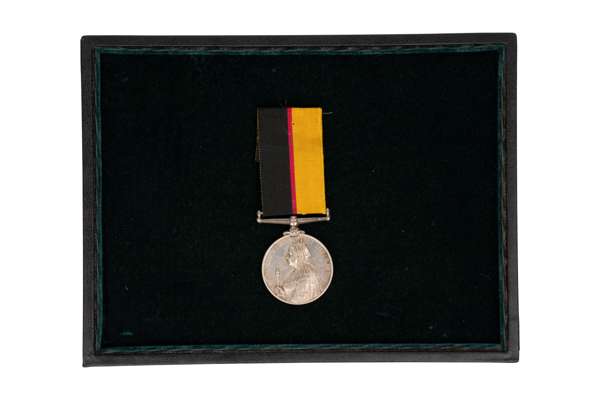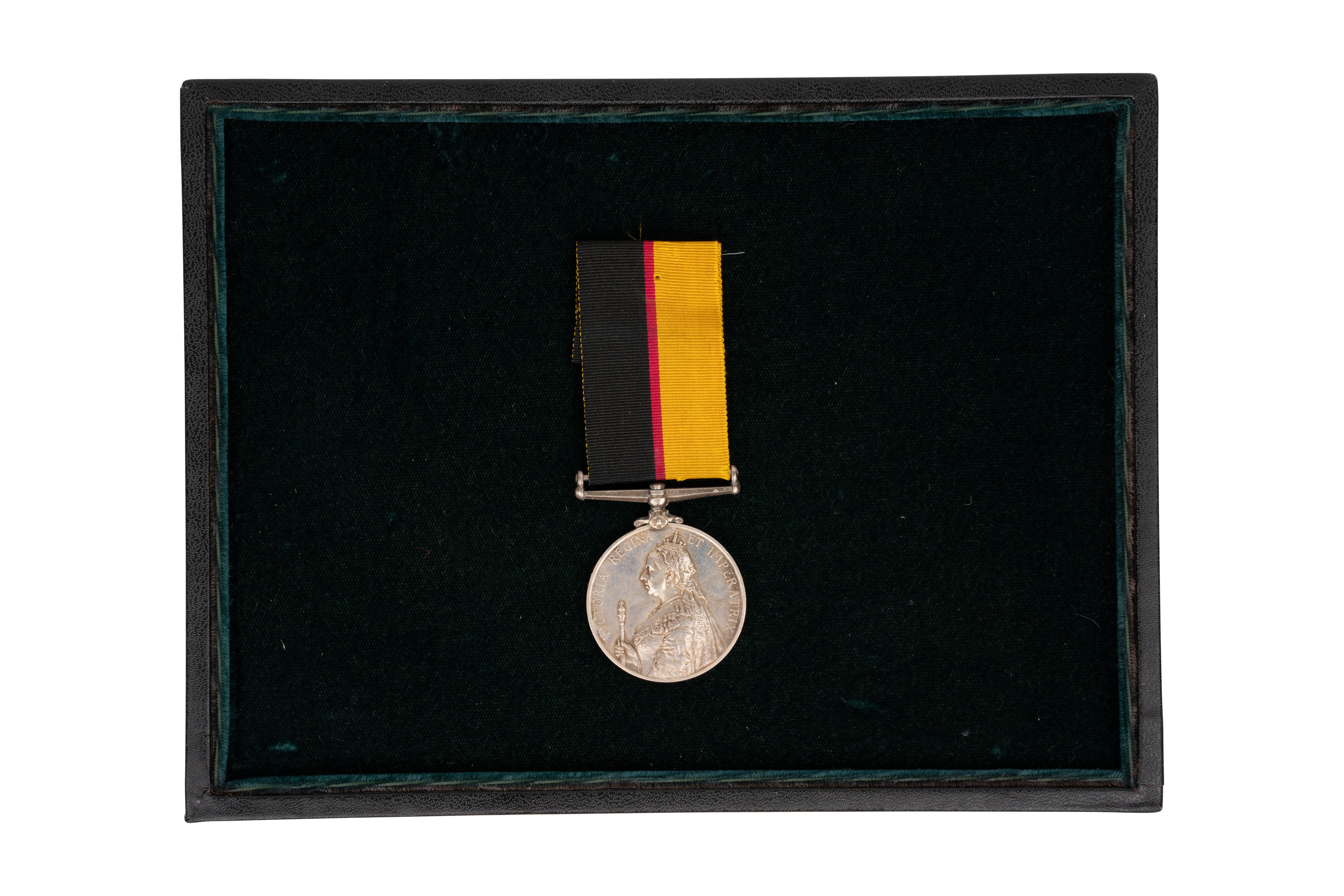
Lot 28
Queen’s Sudan Medal To Private Horner, 2/ Lancashire Fusiliers, who was later Killed in Action at Spion Kop


"Behind The Wire" - Medal and Militaria Sale | M25001
Auction: 17 September 2025 at 14:00 BST
Description
The Queen’s Sudan Medal awarded to Private F. M. Horner, 2nd Battalion Lancashire Fusiliers who was Killed in Action at Spion Kop on the 24th of January 1900 comprising Queen’s Sudan Medal 1896-98, (3616 Pte F. Horner. 2/Lan: Fus:), engraved naming, very fine. (1)
The following account of the battle in which he was killed is taken from: Natal Field Force, JB Hayward & Sons:
Spion Kop is a prominent peak, 1,465 m high, in Natal Colony (Bergville district; KwaZulu-Natal) 30 km north-west of Colenso. Variant: Spioenkop (Afrikaans spelling used on the 1: 250,000 map).
On the night of 23 January 1900, Maj-Gen E.R.P. Woodgate was in command of a force comprising a detachment of Royal Engineers, Thorneycroft's Mounted Infantry, the 2nd The Lancashire Fusiliers, the 2nd The King's Own (Royal Lancaster) regiment and the 1st The Prince of Wales's' Volunteers (South Lancashire) regiment.
Guided by Lt-Col A.W. Thorneycroft, the force reached the summit of Spion Kop at 3.30 am on the following day and the small Boer picquet withdrew to report the presence of the British force to Asst Cmdt-Gen S.W. Burger.
In the thick mist the British troops entrenched, but failed to see that they had not gained the true crest nor command of adjacent hills such as Aloe Knoll which commanded their position.
Under Gen L. Botha, the Boers regrouped rapidly and from Aloe Knoll the Carolina commando under Cmdt H.F. Prinsloo was particularly effective in enfilading the British positions.
In the attempt to secure the true crest, Woodgate was mortally wounded and thereafter the precise focus of command on the British side was unclear.
The Imperial Light Horse, the 2nd Duke of Cambridgeshire's Own (Middlesex) Regiment and the 2nd Dorsetshire Regiment were ordered up, but conflicting orders resulted in less than total support.
Fierce fighting throughout the day in and around the main British trench saw Boer forces initially driven back from the main crest, but reinforcements from the Utrecht and Pretoria commandos, with Cmdt D.J.E. Opperman and Field Cornet P.F. Zeederberg prominent, pushed the British back.
As dusk fell the British trench was subjected to an intense artillery and small arms bombardment and the situation was virtually stationary. With considerable numbers killed and wounded, a shortage of water and inadequate medical facilities, Thorneycroft and the other commanders on the hill considered that they were in no position to continue and ordered a withdrawal.
They had not realised that the Boer forces had also withdrawn, primarily because the important position of Twin Peaks had been taken by the 3rd The King's Royal Rifle Corps during the afternoon, a fact not known by the British commanders on Spion Kop.
At 4 am on 25 January, a few burghers again reached the summit and found it deserted except for the dead and dying. British losses were 322 killed or mortally wounded, 563 wounded and some 300 captured; the Boers lost 58 killed, among them Asst Field Cornet B. Badenhorst of Vryheid (the only officer), and some 140 wounded.
Sold with Copy Medal Rolls for the Queen’s Sudan Medal, The Khedives Sudan Medal – Medal and clasp Khartoum 1898, Queen’s South Africa Medal Roll Medal and one clasp Relief of Ladysmith annotated Killed in Action 24.1.00. Copy page The Boer War Casualty Roll 1899-1902 page 342


